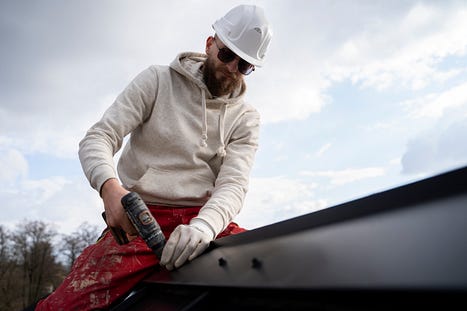Exploring the Range of Roof Leakage: From Drips to Torrents

Roof leaks come in all shapes and sizes. From occasional drips to torrential downpours, leakage exhibits a wide range — and severity. Pinpointing causes along the spectrum requires roofing know-how. As seasoned contractors, JC Roofing breaks down leakage types, detective strategies, and customized solutions to match the mystery flow.
Isolated Drips and Droplets
Light leakage presents as sporadic water droplets or drips, typically after substantial rain, snow or wind. Common entry points include worn flashing, cracked caulking, gaps around vents or nails popping up. Tracing tapered tributaries back to the source aids detection.
For instance, rusty flashing allows water to penetrate under shingles then trickle downward before emerging. So follow drips like a trail to unveil the origin. In other cases, a single open shingle seam or nail hole creates channels. Simple fixes involve patching holes, replacing flashing sections or renailing raised shingles.
Widening Wet Spots Spread Across Ceilings
Water stains on interior ceilings that gradually expand can indicate moderate levels of leakage. You might occasionally notice isolated drips, but after heavy storms, multiple spots develop and grow larger over time as water seeps through the layers of the roof.
In these cases, moisture accumulates on water-resistant barriers or sheathing unable to handle substantial volumes. Detecting and repairing breaches before inner drywall/insulation damage occurs is key. Thoroughly checking for widely distributed faulty flashing, bonding issues or deteriorating shingles is essential.
Heavy Downpours Mean Major Roof Problems
If intense storms regularly create flooding, major Roof leakage or even collapse in extreme cases — major roof deficits are likely present. Massive leakage signifies over 20% shingle wear, sizable holes/cracks or complete flashing failure. Torrential flows cannot be managed by inferior roof components.
Diagnosing these substantial problems requires comprehensive inspection, including interior attic analysis. Full roof replacement is often mandatory to provide adequate water protection. Severely compromised roofs cannot simply be patched or partially fixed. Completely new overlayment is necessary to stop cascading water intrusion and prevent destruction.
Whether you’re dealing with mysterious drips or all-out deluges, JC Roofing has the detective skills to uncover the source and solutions to tackle any type of leak. Contact us today to explore customized repair or replacement options ready to handle whatever storms come your way.



Comments
Post a Comment